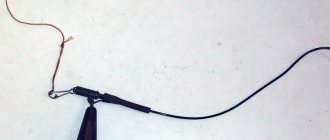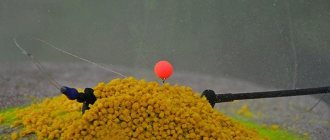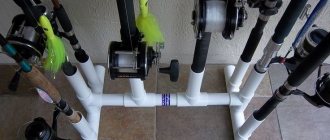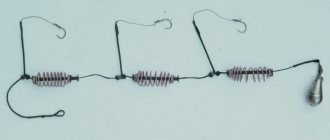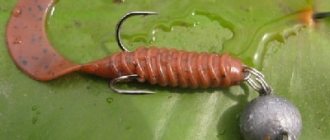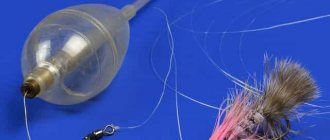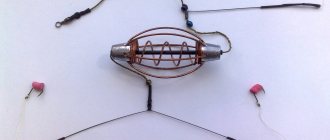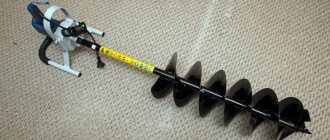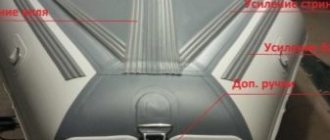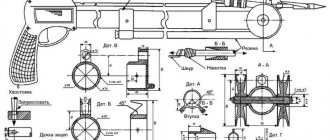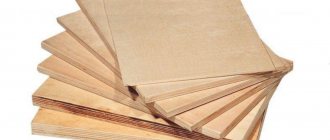When is it used?
Installation of a feeder with a feeder is used by fishermen in exceptional conditions:
- Strong current;
- Unsuitable depth for classic gear;
- Unique large fish that spinning rods may not be able to handle;
- The fishing point is far from the shore.
The feeder allows you to immerse the implement as deep as the fisherman requires. It also distributes complementary foods in a limited area, increasing productivity.

Selecting a device depending on the fishing location
To choose the best installations for the feeder, we focus on the characteristics of the reservoir:
Weak current or its complete absence. A trap with a lightweight design (10-15 g) is used. It needs to be washed out quickly and distributed evenly on the bottom. The usual mixture is diluted with maggot dolls (for loosening).
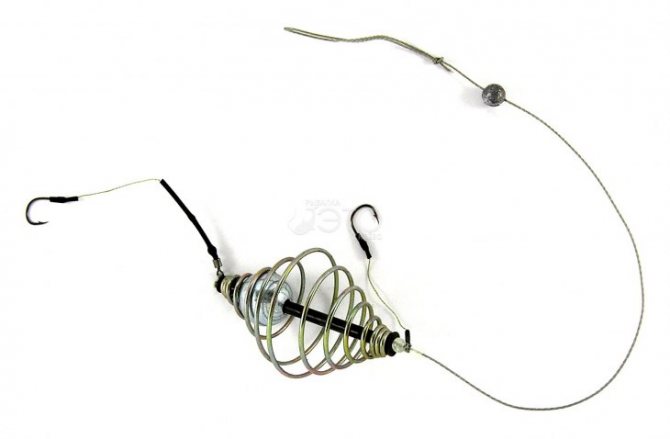
Rivers with moderate and slow flow. Cylindrical feeders are used, mainly for catching bream. The device is convenient in that it can be of an open or closed type, depending on the requirements of the fisherman.
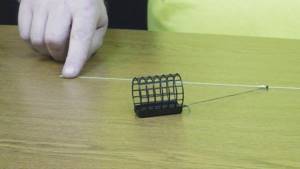
The tackle is very sensitive, so you can’t just use worms, they are quickly washed out of the feeder. It is better to use classic bait mixed with maggots.
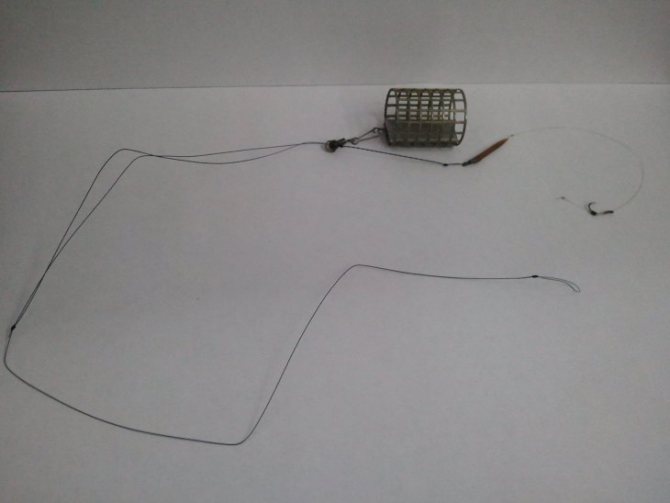
Deep-sea reservoirs. Cone-shaped feeders are used.
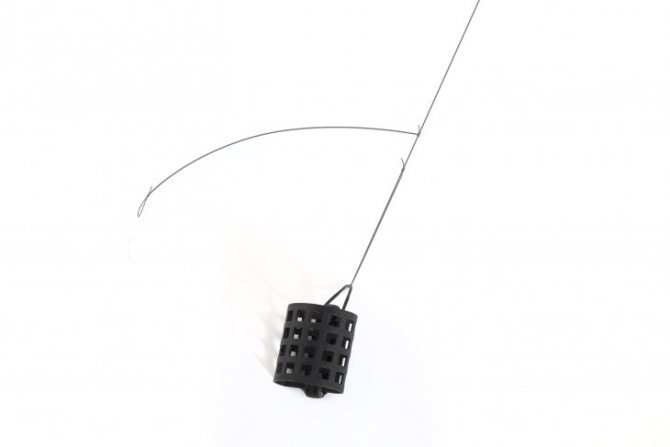
At depths without current, the fish is very mobile. Therefore, she needs to offer standing complementary foods that are not immediately washed out of the cone-shaped feeder.
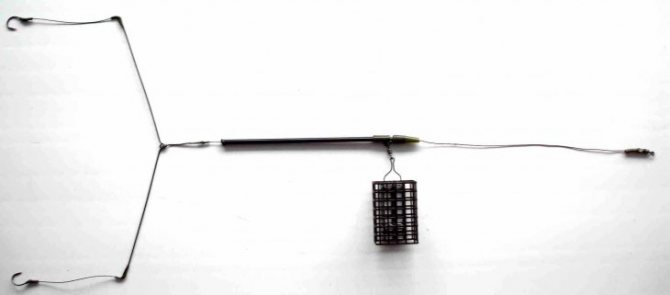
Synthetic flavors are added to the classic bait of crackers, semolina porridge, flax seeds and nuts.
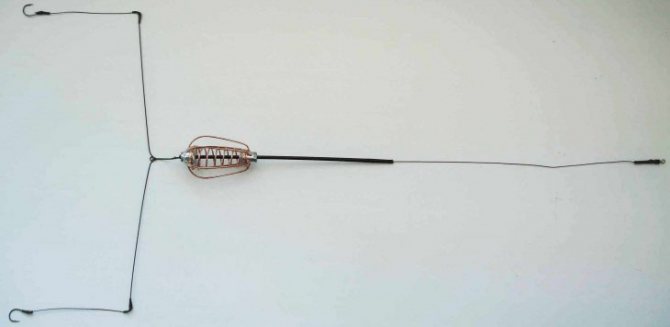
In the labyrinth of feeders and bottom gear. Part 1 - traditional and special feeders
Those amateur fishermen who are just starting to use feeders often, in the process of selecting the necessary equipment, rack their brains over what kind of feeder to choose? And in fact, in any well-equipped fishing store they are represented by more than a hundred different types. And here the following question would be appropriate: when and what kind of feeder should be used? In this article I will try to simplify your choice by narrowing down this exceptional variety to just a few basic models! It is well known that Haldorádó is at the forefront of the development of not only small fishing accessories, but also feeder feeders. Most of the species that will be shown here are models of our own production, and in addition to them - feeders from other manufacturers, for special occasions. Of the 10 samples presented to your attention, for a novice fisherman I would first of all recommend the Rocket Feeder, and only then, with a calm heart, I could suggest, as an option, the Special Round feeder. These are two basic models that - and this is without exaggeration - you can effectively apply in any situation. Haldorádó Rocket Feeder This feeder became famous under the name rocket or drop. A universal accessory that is indispensable for feeder fishing in both still and river water. Its advantage is that it has a larger capacity and therefore, with a one-time cast, we can place more bait on it than in closed models. In addition, this feeder, compared to similar ones from other manufacturers, has a more rounded and streamlined shape. Thanks to this, the nutrient mixture is washed out of it faster and we can get a bite faster! Characteristics: • Ideal shape, allowing you to make longer and more accurate casts; • Exceptionally massive design that is simply impossible to squeeze with your hands; • Compared with conventional weaving, which is necessary to accommodate a larger volume; • Lead sinker, precisely adjusted by weight; • Special matte surface without shine; • Each package contains two copies of different colors: matte seaweed color and stone color; • Feeder with a small mass (15, 25, 35 grams) for standing water, and with a larger mass (50, 70 grams) - for river fishing; • Diameter and height of feeders: 15 g – 20 x 60 mm, 25 g – 28 x 70 mm, 35 g – 28 x 75 mm, 50 g – 32 x 80 mm, 70 g – 32 x 85 mm.
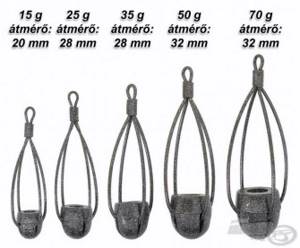
Such a universal feeder, which is indispensable for feeder fishing in both still and river water (átmérő - diameter)
.
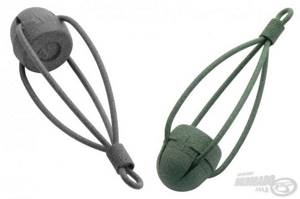
Each package contains two copies of different colors: matte seaweed color and stone color
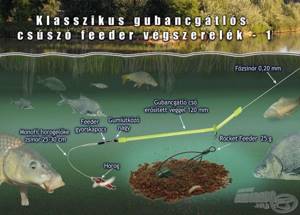
Simple and effective bottom tackle (in the picture: classic sliding, preventing the formation of a loop, feeder tackle -1: main cord (0.20 mm) – Rocket Feeder 25g – anti-twist tube, preventing the formation of overlap with a reinforced end 120mm – large rubber stopper – feeder fastener - monofilament leash, fishing line 25-30cm - hook). Haldorádó Special Round Feeder If you want to use a feed that is quickly washed out of the feeder after the feeder is immersed in the bottom, then in any case you need a closed model. The Special Round Feeder is a classic feeder of the highest quality, in which every detail has been carefully thought out. During the development process, we took as a basis the classic round feeder model, which is used by most anglers, but we also tried to “polish” every little detail. How did we achieve this and what did we change? Characteristics: 1. Perhaps the most noticeable feature on our model is the attachment ball, which is either connected to an anti-twist carabiner, preventing the formation of a loop, or directly tied to the main cord. A small but strong iron eye emerges from the edge, which is guaranteed not to break or tear out of the basket, and, due to its small size, the fishing line cannot wrap around it, so the likelihood of a loop forming is minimal. 2. From closed feeders with a powerful, too dense grid, the bait is slowly washed out (even if thin red worms are added there), so it was necessary to make a feeder feeder that would be made of a thin mesh with the optimal size of holes, but it (due to the weak , fragile material) was easily squeezed by hand. To maintain the thinness and lightness of the feeder, but at the same time increase its stability, its edges were reinforced at the bottom and top with soldered rims. To do this, each copy is soldered by hand! This thickened bottom and top rim immediately doubles the strength and stability of the feeder. 3. Such coloring and the surface of the feeder were necessary so that it would not appear as a bright dangerous thing at the bottom of the reservoir, but would fit in there unnoticed and would look like an object filled with tasty food. Green and black paint without shine best met these requirements. 4. The ideal size also required an appropriate weight. So, the size scale consists of three pieces, which correspond to three different lengths and two diameters. But what to do if you need a large feeder, but at the same time light weight? How is it possible to ensure that there is only 10 grams of lead in a 30 gram basket? We thought about that too! Special lead pillows can be lifted and moved from one feeder to another using a screwdriver to adjust their weight. Even during fishing, you can change the weight of the feeder by changing its sinker, and this exchange will take a maximum of 1 minute! And at the same time, you don’t have to be afraid that it will fall while fishing. One package contains 2 copies of different colors (algae green and matte black). Size scale: 10g – diameter: 25 mm, length: 35 mm 20g – diameter: 25 mm, length: 40 mm 30g – diameter: 30 mm, length: 45 mm
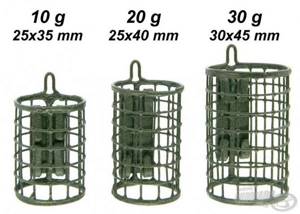
Classic feeder feeders of the highest quality, in which every detail is carefully thought out.
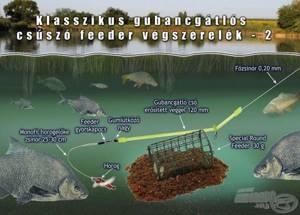
Suggestion for beginners - bottom gear, which is guaranteed to have no loops (in the picture: classic sliding, preventing the formation of a loop, feeder gear - 2: main cord (0.20 mm) - Special Round Feeder 30g - tube that prevents the formation of a loop with a reinforced end 120mm – large rubber stop – feeder fastener – monofilament leash, fishing line 25-30cm – hook). Haldorádó Special Round Feeder XL The design of this feeder is similar to the previously presented Special Round, only this is a larger version, which we made in 3 sizes - 1XL, 2XL and 3XL. Its peculiarity is that despite its large size, its weight is small and all three sizes are 10 grams each. But when this feeder is full, its maximum total weight can exceed 100 grams! If there is a need for even more weight, we can easily add it by changing the weights of the feeders with each other. Among bottom fishermen with little experience, the following question may arise: why are closed feeders of such a large size and capacity needed, why are smaller traditional sizes not sufficient? When fishing for bream, the end tackles are in the water for no more than 2 minutes and frequent casts ensure constant delivery of the bait. For larger fish, on the contrary, you often need to wait longer (sometimes 5-10 minutes). We compensate for these rarer casts with a large amount of feeding, which can be mixed in these feeders; this is the only way we can ensure a constantly “set table” for fish that swim up later. Another advantage is that we can add corn and wheat to the feed, which would get stuck in small feeders, but in larger feeders they can easily get to the right place. One package contains 1 green and 1 black feeder. Characteristics: • closed basket with increased capacity; • large size, but light weight; • grains from the fertilizer do not get stuck in the feeder, but reach their intended destination without any problems; • fast and guaranteed erosion of fertilizing; • even the largest size of the feeder (3XL) complies with the rules of fishing competitions; • one package contains 1 green and 1 black feeder with a matte surface, without shine; Size scale: diameter 1XL size: 35 mm, length 47 mm, weight: 10 g, filling approximately 40-50 g diameter 2XL size: 41 mm, length 47 mm, weight: 10 g, filling approximately 60-70 g diameter 3XL : 45 mm, length 66 mm, weight: 10 g, filling approximately 90-100 g

Options for the largest diameters (XL) Special Round feeders FOX Feeder feeders These feeders are made of plastic, making them lighter than iron ones, which gives an advantage when using them in silty reservoirs - they do not fall into the silt. These feeders come in different sizes and weights, and everyone can choose the most suitable one for themselves, depending on the type of fishing. The smallest of them, a 14 gram feeder, is designed for fishing with sensitive feeder or picker rods, when you need to fish with fine-grained, instant bait. If it is windy and a 14 gram feeder is carried by the current, and if you are fishing with a more powerful picker or medium feeder, then it is better to choose a 21 gram feeder. But when a greater distance is needed, then only 28 or 42 gram feeders are suitable. The real exclusive thing about this feeder is that the lead weight on it can be changed in just one movement, thanks to the invention of FOX. So, after purchasing such feeders of different weights, you can, if desired, change the weights on them to larger or smaller ones, even during the fishing process. Characteristics: • 3 sizes: small, medium, large: 14, 21, 28g (size: 25 x 30 mm) medium: 14, 21, 28, 42g (size: 30 x 40 mm) large: 14, 21, 28g (size: 35 x 50 mm) • made of plastic, which makes it less likely to fall into silt; • the lead weight can be changed; • quick leaching of fertilizer
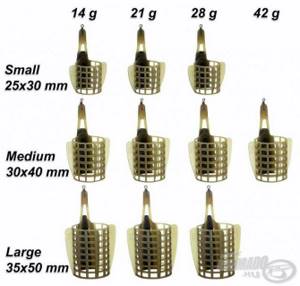
The weight of the feeder can be changed Guru Cage Feeder A Guru entered the market with a special shape. Its lead weights are U-shaped and are located around the feeder, with a large diameter of the holes. This form of feeder makes sense when we would like the food in it to be washed out as quickly as possible, immediately upon entering the water column. In the photo you can see that Guru feeders are also the smallest. They can accommodate a minimum amount of feed. This is important, because it happens that in a 5-hour competition you can count on only 5-10 fish. Which need to be caught in a minimum amount, but with concentrated precision fishing. In this case, such a small but well-thrown feeder has a right to exist. Characteristics: • 4 sizes: mini, small, medium, large mini: 20g (20 x 20 mm) small: 20g (22 x 30 mm) medium: 23g (25 x 35 mm) large: 23g (30 x 45 mm) • made of plastic, which sinks less in silt; • front weight design; • extra fast leaching of fertilizer; • intended exclusively for fishing in deep water;
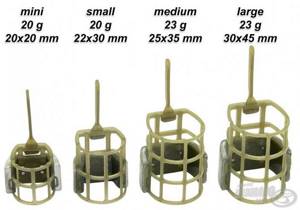
Thanks to the large holes in the feeder, the feed is washed out extremely quickly. Preston Open Ended Feeder Having examined special feeders, we now come to one interesting feeder, very simple in shape. These are closed plastic feeders. Among them there are large masses, for example, 60 grams, which are used in deep water, more than 3 meters, and with their help they catch fish at the very bottom of the reservoir. This feeder falls exactly to the bottom and the food with which it is filled is only washed away there. Traditional feeders are not suitable for this. They are especially effective when fishing for carp in competitions. The wide sole-shaped lead weight increases the stability of the feeder. Inside there is an elastic outlet that prevents the formation of a loop when casting, pushing the line away from the feeder. These feeders are available in L (large) size and four different weights (20, 30, 45, 60 grams). Characteristics: • available sizes: 20, 30, 45, 60g; • feeder size: 30 x 40 mm; • quickly immersed feeder; • made of plastic, which sinks less into the silt; • sole-shaped lead sinker; • only at the bottom of the reservoir is the fertilizer washed out.
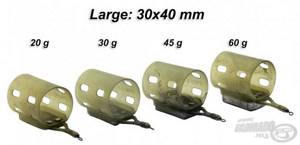
This feeder should only be used if you want the fertilizer to dissolve at great depths or at the bottom of the reservoir. Drennan worm feeder with a lead sinker at the end Among the plastic feeders, there is a model that is suitable exclusively for live food, mainly for red thin worms. Its advantage is that live food for hungry fish is concentrated around the hook. The streamlined shape with a lead sinker at the bottom allows you to cast over long distances. The lid of the feeder is secured from the inside with a powerful rubber band. The lid or bottom does not fall apart or open during casting. Characteristics: • available size: 25g; • adapted to accommodate live food (mainly red thin worms) or extra soft flavored food; • made of plastic, which sinks less in silt; • suitable for long distance casting.
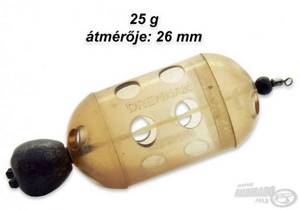
Filled with red skinny worms, this feeder can be cast long distances. Preston Worm Feeder with Shoe Sinker This feeder has slightly smaller holes than the one just shown and the lead sinker is on the side rather than the bottom. This part of the feeder will always land on the bottom of the reservoir. Thanks to this, it can also be used in river water, since the sinker located on the side will prevent its movement with the flow. This feeder is designed for shorter casts, no more than 40 meters. Characteristics: • available size: 20g • adapted to accommodate live food (mainly red thin worms) or extra soft bait; • sole-shaped lead sinker; • made of plastic, which sinks less in silt; • Can be accurately cast to a maximum of 40 meters. 11 f.

lands on the bottom of the reservoir. Haldorádó Long Cast Round This feeder is the champion in casting range among closed feeder feeders! We were inspired to create it by the desire to achieve casting as far as possible. In addition, an important motivator for its development was that the place chosen for fishing would be as safe as possible for fishing. Unlike traditional feeders with a side sinker, this one is located at the end, which was made possible thanks to a special fastening technique. Because of this, during casting the feeder does not dangle and does not deviate from the direction of the throw. The special end sinker and streamlined shape allow you to achieve almost twice the distance and incredible throwing accuracy with the same swing force. And in this feeder you can put the same kind of fertilizer (as in a lightweight design), which before it was only put in closed feeder feeders with a side sinker. Another great advantage of this model is that it can also be used in muddy places, since after falling into the water it does not lie on its side, but stands vertically, sinking (disappearing) less even in the softest mud. This feeder opens up new opportunities for experienced fishermen to experiment and compete in fishing! There are two sizes on sale (25 and 35 grams). One package contains two feeders - green and black. Characteristics: • available sizes: 25 and 35g, both 35 mm in diameter and 45 mm in length; • special matte surface without shine; • each package contains two feeders of different colors: matte seaweed color and stone color; • final sinker, suitable for long casts; casting distance can exceed 60 meters! • effective also in muddy areas;

This feeder is the champion among closed feeders in terms of throwing range (feeder size 30x45 mm - 25g and 35g)
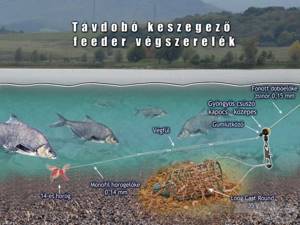
Suggested bottom gear (in the picture: long-range feeder equipment for catching bream: casting leader made of braided fishing line 0.15 mm - medium round fastener - Long Cast Round 35g - rubber limiter - end eye - monofilament leash 0.14 mm - 14th hook ). Haldorádó Ring Round This feeder combines easy long-range casting with grace. Allows you to make fishing hassle-free with both live food and cereal supplements. If, when using a traditional feeder with a side sinker, fishing at a distance of 40 meters in the wind becomes inaccurate and difficult, then there will be no problems with this feeder! Even at a longer distance! All this became possible thanks to a complex factory technology for installing a lead weight at the end of the feeder, which is guaranteed not to fall, since it is inseparable from its mesh. The ring-shaped lead weight does not prevent the feeder from quickly filling. This ultimate sinker will get your bottom tackle where it needs to go in extreme weather conditions without deviating from the target and providing more precise, flawless fishing. You can purchase this feeder in two sizes and different weights. Medium: 25g, 35g, 45g, Large: 30g, 35g, 40g, 50g. Characteristics: • two sizes of feeder: medium: 25 x 50 mm (25, 35, 45g), large: 32 x 50 mm (30, 35, 40, 50g) • ring-shaped final sinker; • the sinker and the mesh of the feeder are soldered together, therefore inseparable; • also guarantees a good throw in windy weather; • possibility of rapid erosion of fertilizing; • 2 pieces per pack.
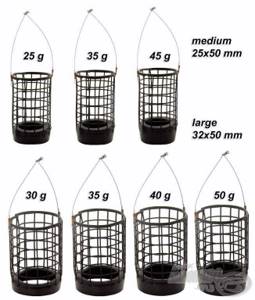
This feeder combines easy long-range casting with grace.
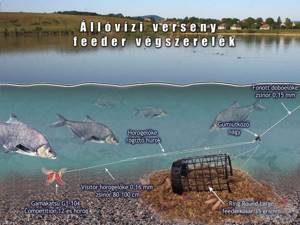
It is recommended to cast with these bottom tackles (in the picture: feeder equipment for competitions in still water: casting leader made of braided fishing line 0.15 mm - Ring Round Large feeder basket 35g - large rubber stop - loop for the leader - leader 0.16 mm, fishing line 80 -100 cm – Gamakatsu G1-104, Competition 12th hook). Haldorádó Hard River The last thing left from the closed feeders is a real heavy bomber. As the name already indicates, this model was developed by us for a real big river. If the distance is too large or the water current is incredibly strong, then only corner feeders can compete with the force of the water. This stable wire feeder, with a sole-shaped lead sinker and stuffed with food, guarantees that it will remain in its place, at the bottom, as long as necessary, and the feeding will be systematically washed out from there. We can speed up the release of food from the feeder if we add live food (red thin worms, pieces of worms) to the nutritional mixture. A wide scale allows you to select the required size of the feeder in accordance with the strength of the river current. In the process of choosing the size, do not forget that although a large feeder can hold a lot of food, it also needs a suitable powerful feeder rod! The smallest of these feeders is 1 ounce (28 grams), and the largest is an almost extreme 5 ounces (140 grams). Each package contains 2 feeders: stone and matte green. Specifications: • available sizes: 1 oz – 28g, 2 oz – 56g, 3 oz – 84g, 4 oz – 112g, 5 oz – 140g; • with a sole-shaped lead sinker; • reinforced iron fastening ball; • stable in large rivers and even with the highest currents! • special matte surface, without shine; • each package contains two feeders - matte seaweed color and stone color.
.
This feeder will stay in place even with the strongest river currents.
This is the simplest fixing bottom tackle (picture name: river fmder rig with a large loop: casting leader made of braided fishing line 0.15 mm - shorter line - Hard River feeder 5 oz / 140g; longer line - leash fastening loop - leash 0, 16 mm, line 80-100 cm – 12th hook)
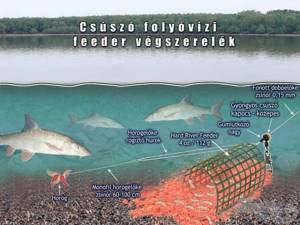
Another sliding bottom tackle (picture title: Sliding river bottom tackle: casting leader made of 0.15 mm braided line - medium round sliding fastener - large rubber stopper - Hard River feeder feeder 4 oz / 112g - leash loop - monofilament hook leader, fishing line 60-100cm – hook). Author: Gabor Deme Photos Gabor Nagy, Peter Tokacs
You can find everything for feeder equipment here
Classification
The feeder is chosen depending on the class. There are 3 of them in total:
- Easy
- Average
- Heavy
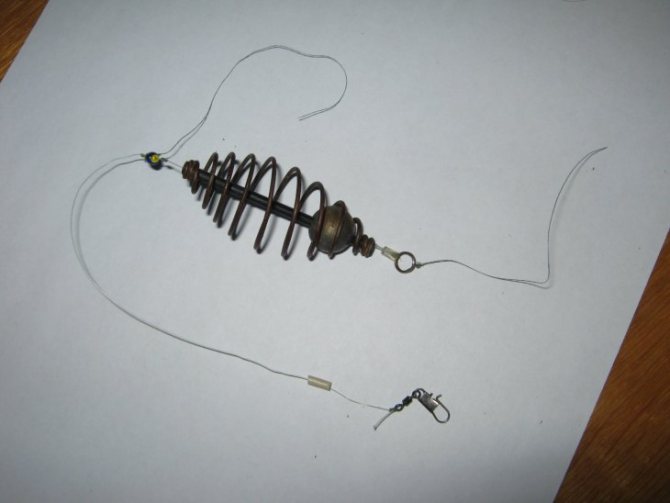
The vast majority prefer the middle class. The versatility of the device allows you to adapt it to many fish, as well as to different features of reservoirs.
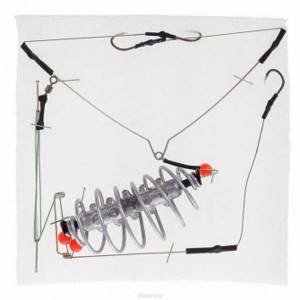
Classic feeder equipment
By and large, all classic feeder equipment can be divided into two large groups: paternosters and loop equipment. Let's take a closer look at each of them.
Paternoster equipment
In the feeder, installation of tackle with a tap has become no less important and well-known. There are several options for feeder paternoster. For example, tie a large loop, cut it in such a way that you get two “tails” of different lengths (approximately in a ratio of 1:2), tie a feeder to the short one, and a leash to the long one. However, Steve Gardner's version is better, in my opinion. The outlet of the feeder in the form of a loop is more rigid, and the outlet of the leash is directed upward, thereby the leash is further from the feeder.

Whatever paternoster you tie, it will have several important properties.
Firstly , it is very high sensitivity. In fact, the hook is connected to the quiver tip directly, bypassing the feeder. It's always good.
Secondly , during the current, the arched line lifts the leash above the bottom. In a strong current with a long outlet of the feeder, even the hook with the nozzle will come off the bottom, playing and attracting fish. This is also good, but not always. The fact is that such a “live”, active bait will be found faster by small, energetic fish, such as roach and silver bream, than by a fat lazy bream or carp.
Probably, many people already have a question: what kind of word is “paternoster”? Actually, Pater Noster is Our Father. One of the main prayers in Christianity. What does fishing have to do with it? This is what Scandinavian fishermen called cod and herring longlines and lines with leashes. This tackle fed them, and they had to know it like the Our Father.
To press the leash to the bottom, thereby returning it to the area of interest of large fish, there are other installation methods.
Loop accessories
In loop feeder rigs, the feeder slides along the loop, and the leash is attached to the twist-off. The feeder is also located away from the “line of communication” between the fish and the fisherman, although to a lesser extent than in the paternoster.
One of the main properties of loop equipment is the possibility of self-notching. Having picked up a tasty morsel from the bottom, large fish often swim a little downstream in order to leave the school and calmly eat the prey. But the free movement is limited by the size of the loop, and the fish, unexpectedly bumping into the feeder, rips it out of place, and ends up on the hook. This is often expressed in “acting out” a nod – a characteristic bream bite in the current.
Depending on where the leash outlet will be mounted, the loops can be symmetrical or asymmetrical. The more symmetrical the loop, the more strongly it presses the leash to the bottom. The more asymmetrical it is, the more sensitive and more paternoster-like it becomes.
In general, in a sense, the Gardner paternoster can be considered an absolutely extreme version of the asymmetrical loop.
Read! Fishing for crucian carp on a feeder
Equipment
Installation of feeder equipment includes work on the feeder and hooks. The main task is to connect everything necessary so that the angler notices the bite in time and has time to react.
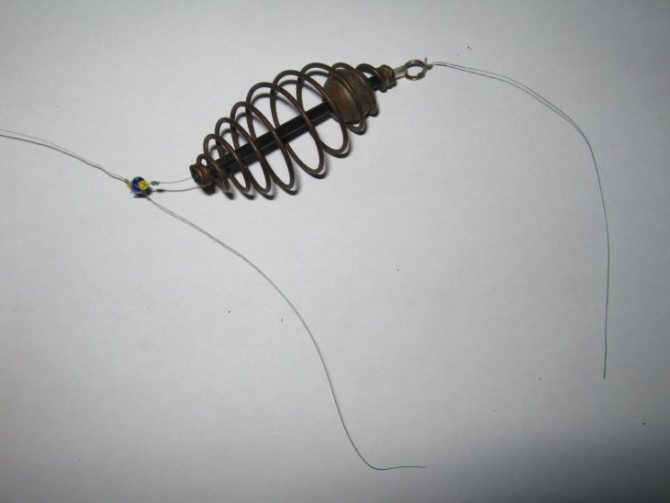
Sliding feeder equipment
Classic feeder equipment is good and has proven itself in a variety of conditions. However, with the start of the World Feeder Championships, a problem arose. In the rules of feeder competitions approved by FIPSed (International Federation for the Sport of Freshwater Fishing), it is written in black and white that the feeder must be mounted only in a sliding version. The reason for this is the need to make the tackle safer for the fish, so that if the main line breaks, the fish caught on the hook does not drag the feeder with it.
We will not discuss how effective such a measure is, but take it as a given: according to the current rules, only sliding equipment is allowed at world-level competitions.
Of course, sliding installation was used before, but was not widespread. First of all, because its sensitivity left much to be desired, and when casting, annoying tangles and overlaps often occurred.
But rules are rules, and the athletes had to, as they say, “turn on their brains” to find a solution to the problem. And this is what came out of it.
Running feeder
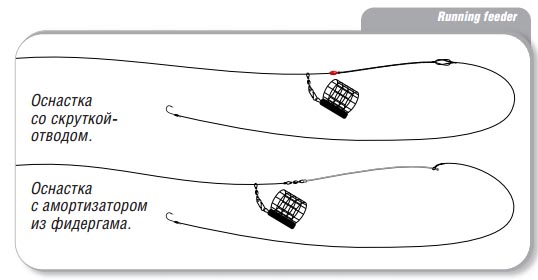
This is the basic equipment. It can be done both on monofilament fishing line and on braided line. It is knitted extremely simply: the feeder (or better yet, a swivel with a clasp to which this feeder will be attached) is launched along the main fishing line, then a high-quality rubber stopper of a minimum size is put on the fishing line, which will not fit into the eye of the swivel, a twist 7-long is formed at the end of the fishing line. 8 cm (longer is not needed, believe me, it will only get worse) and a knot is tied so that the twist does not unravel. All. The feeder rests on the stopper, the stopper rests on the knot, and the twist moves the leash to the side. Simple and effective.
When using thick leaders and massive nozzles, you can avoid twisting by ending the main line with a swivel. In this case, it is possible to replace the stopper with a rubber bead or discard it altogether, let the feeder rest directly on the lower swivel.
If such feeder equipment is mounted on a braided line, then you just need to make a couple of changes. Instead of a stopper, take a small bead, pass the braid through it several times, and replace the twist with a regular loop. Many have probably already realized that such braided tackle will turn out to be very rigid, without shock absorption. When catching small things this is quite normal, but when catching larger fish it can lead to a large number of catches. I’ll tell you how to deal with this below.
Such options for feeder equipment are somewhat similar to a symmetrical loop. They press the leash well to the bottom, and in the current they even have a decent degree of self-notching property, despite the absence of an upper stroke limiter. In still water they show “long” beautiful bites... In general, for a confident large bottom fish - this is it. However, weak, cautious bites on these rigs are not always visible. What to do?
Sliding paternoster
It is necessary to bring the equipment closer in properties to the paternoster in order to leave the feeder aside from our communication with the fish. How to do it?
Yes, it’s very simple: separate the feeder and the sliding element with a flexible link, for example a piece of thick fishing line. Let me remind you that the main advantage of the paternoster is simplicity and lightness, the absence of unnecessary elements. Let’s minimize everything to the maximum in the sliding version!
Read! Catching perch on a feeder
Let's take a small bead as a sliding element (these can be bought in sewing stores). The flexible link is often a 0.3-0.35 mm fishing line folded in half, but lately I prefer to use thick braid for these purposes.
There is no need to make a long branch; 7-8 cm is quite enough. There is a bead on one end of the tap, and a carabiner on the other.
If the rig is made of monofilament, then the bead can rest directly on the twisting-retraction unit of the leader; if it is made of braid, it can rest on the same bead used as a stopper.
It should be noted that sliding feeder equipment is still more capricious to use than classic ones. They require better, more technical casting and... better feeders! Yes Yes. Often the cause of tangling of sliding equipment is not very high-quality feeders. A slightly lopsided homemade product, which works quite well on a Gardner paternoster, can pretty much fray your nerves on a sliding rig.
But as soon as you replace it with a more accurate one, the problem will disappear! Many anglers are tempted to make a twist on the outlet of the feeder. Under no circumstances should you do this! Under load when casting, the twist will rotate the tip of the leader around the main line, tangling the leader.
However, as always, there is a problem. And she is back in the sports rules. The fact is that the feeder above should not be limited by anything. And if we use a shock leader, which we sometimes have to do (we’ll talk about the shock leader below), then the knot connecting it to the main fishing line simply won’t let our bead through, and this is an obvious violation. Well, let's just replace the bead with a special metal ring, which can be found among carp accessories, and screw a rubber stopper into the lower part of the equipment.
These types of sliding paternosters work no worse than the classic ones, and with a confident bite they give longer, clearer bites.
Anti-twist
Used by beginners so as not to lose control of the device. Experienced fishermen refuse, because... The anti-twist tube may spook the fish.

A swivel is tied to the fishing line, and a rubber or silicone bead is put on it. Then they pass it through the anti-twist and tie it to a swivel with a carabiner. The leash with the float is attached separately.
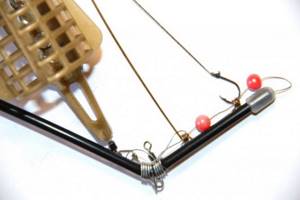
Note!
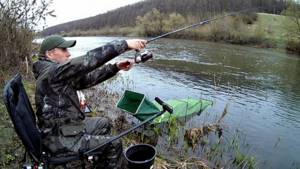
How to fish with pickerel? Equipment features, technology and fishing tactics (105 photos and videos)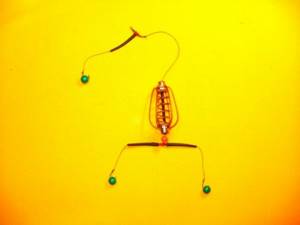
Feeder tackle: basic methods of use, components and fishing techniques for beginners
- Bite alarm for feeder - the best electronic and mechanical models and tips for their use (110 photos + video)
It is better to study the photo of the installation of the feeder with an anti-locker in order to choose the correct distance between the feeder and the leash, otherwise there is a risk of missing the prey.
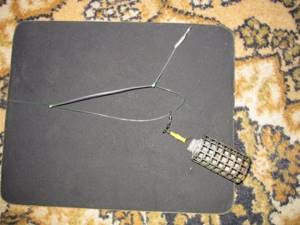
Installation using anti-twist tubes
Well, experienced feeders don’t like these tubes and that’s that. This opinion may be formed after reading articles devoted to this topic. And of course it has its justification. But for novice fishermen, who may find other equipment too complicated, we can recommend using anti-twist tubes as a simple and quick way to get started with feeder fishing.
Some models even provide for the installation of two hooks. This is understandable. A fisherman who has been fishing with bottom gear for a long time knows very well what no bite is, and the more hooks with bait, the correspondingly greater the likelihood of catching at least something. But feeder rigs were invented to enhance this bite significantly! Fishermen, even fish inspectors, often come up to me and wonder: why do you have one hook? But believe me, if you feed correctly and choose the biting point, you won’t be bored; the bites will come one after another, literally a few seconds after casting. Usually 3-4 hours after feeding the catch rate is reached. So why two hooks? Or even three? They will only interfere with each other and get confused. And if the bite is weak or absent, then it is better not to add hooks, but to look for new places for fishing, experiment with bait, with groundbait, and you will definitely find your fish.
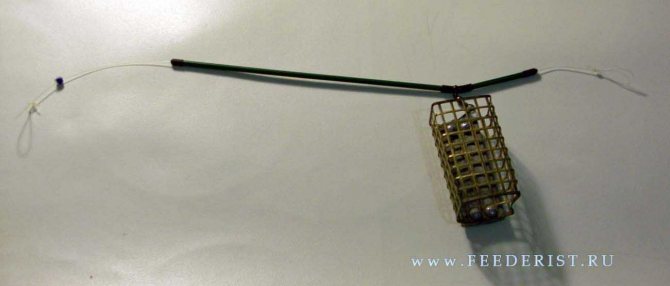
The main advantage of the anti-twist is the ease of installation, which is really important for a novice fisherman. Thread a cord through it, install stop beads on both sides, attach a swivel with a carabiner on one side, and just a loop for attaching a hook on the other. That's all. When biting, the cord slides freely through the anti-twist, signaling a bite.
Video about equipment with an anti-twist tube:
But still, experienced feeders do not like these “rocker arms”. And there is a reason for it. The sensitivity of the gear when using these tubes is minimal; on a muddy bottom, dirt gets into the anti-twist, which leads to it clogging and the cord getting stuck. Flight performance when casting the feeder is reduced. It was repeatedly noticed that when biting carefully, the fish took the bait with an anti-twist much more reluctantly than when using other equipment.
Paternoster
Ideal for agile and aggressive fish. The installation feature is independent cutting.

The equipment elements are tied to one fishing line, so it must be of high quality. Knit several loops at a distance of 20-30 cm from each other. The second loop is for the feeder, it must match in diameter. Next, make a small loop without attaching a leash.
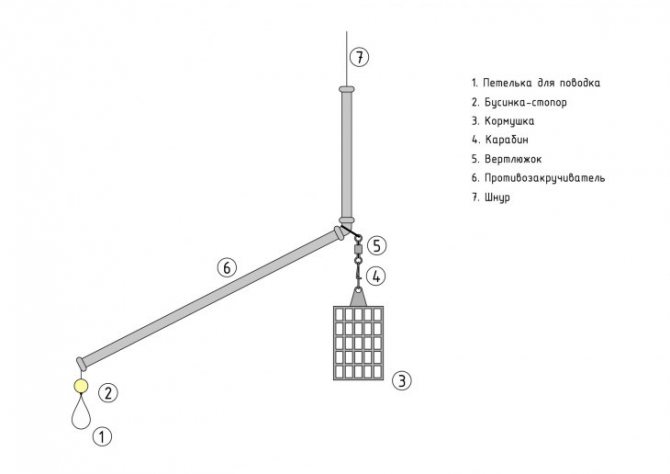
There is a second option - tie a loop at the end of the fishing line, divide it into two parts, and attach a swivel to each of them. A feeder is threaded into another loop, with a leash next to it.
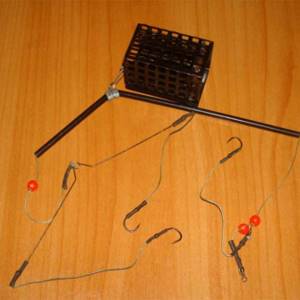
Asymmetrical loop
Used when catching cautious and accurate fish. Bites will be visible if the prey has already become accustomed to the feeder and begins to use the bait carefully.
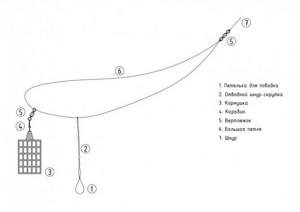
Note!
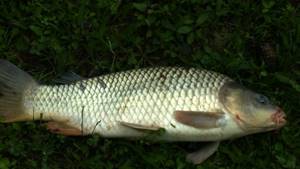
Catching carp on a feeder: the subtleties of fishing and advice from professionals on how to catch carp using different methods (110 photos)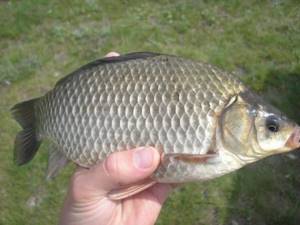
Catching crucian carp on a feeder - tips and secrets of professionals. 115 photos and videos master class for beginners
- Bait for the feeder - popular mistakes, recipes and do-it-yourself bait. Ingredients for bait (110 photos)
The end of the fishing line is threaded through a swivel, where a large 50 cm loop is tied. Separately, a feeder is tied to the swivel. The large loop is divided into two (of different sizes, hence the name). A carabiner is attached to one, and a leash to the other.
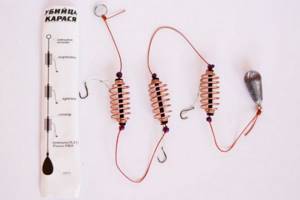
Asymmetrical (asymmetrical) loop
This is probably the most popular feeder equipment. Its main advantage is sensitivity. A disadvantage is the tendency to get tangled when casting, especially with a leash length of more than 40 centimeters.
If, when the bite is active, I throw out this tackle again, but there are no bites, it means there is an overlap again. I pull it out - for sure!
For this equipment, it is important to choose a rigid fishing line with a diameter of 0.3-0.45. An asymmetrical loop consists of two parts: a twist with a loop for the hook and the asymmetrical loop itself.
- We take two meters of fishing line and fold it in half. We measure 1.5-2 centimeters and make a loop for the hook.
- A twisting method that everyone can do: fasten a loop to some object, and twist a fishing line 10-15 cm long under tension. Tighten a double knot at the end. You should get a layer like this.
- On the remaining fishing line, measure out an asymmetrical loop with sides 60-70 cm by 40-50 cm. We thread a carabiner through the larger side to attach the feeder. And tighten the double knot.

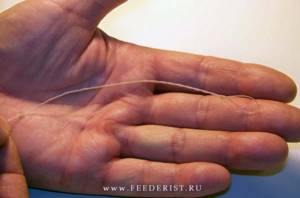
In this equipment, the feeder slides freely along the loop, which gives maximum sensitivity to the equipment. When casting, the twist moves the hook to the side, preventing it from getting caught in the loop.
Watch the video of the asymmetrical loop
After fishing, it should be cut off and a new one tied.
Symmetrical loop
It is the most popular due to its simplicity, the absence of additional fasteners or intricate elements.
Half a meter of fishing line is knitted in a figure eight into a loop, and a leash is attached to it. A carbine and swivel are threaded into the free end. The other end is for a rubber bead if the feeder is heavy. Otherwise, the cormak just clings.
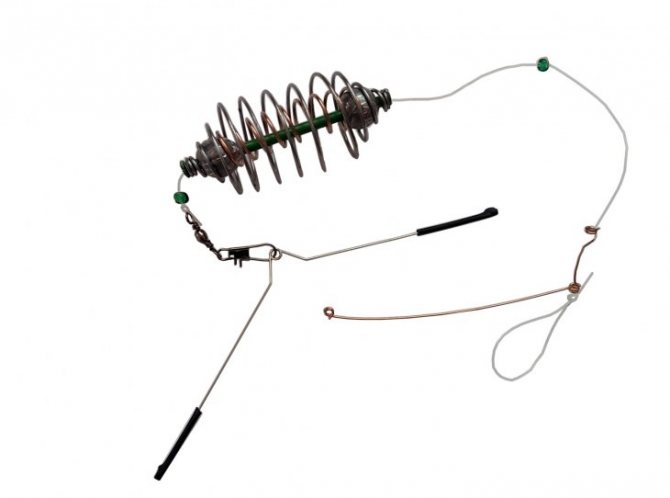
Making the 5 best feeder equipment with your own hands (feeder installations):
Feeder carp equipment Inline Method will require you to:
- Special feeder type “Method”
- 0.3 monofilament (or leadcore) as the main rigging cord
- Skewer
- Rubber stopper
- Hook with hair rig
- Leash made of monofilament (or a special carp leash)
Gardner Paternoster feeder equipment is made from:
- main line
- swivel
- load-feeders
- leash 1 meter long made of fluorocarbon fishing line
- hook
Feeder equipment “asymmetrical loop” is made from:
- main line (fluorocarbon or monofilament)
- two swivels
- load-feeders
- leash 1 meter long made of fluorocarbon fishing line
- hook
A symmetrical loop is made from:
- fluorocarbon line or monofilament
- 2 swivels
- load-feeders
- 1 meter fluorocarbon leash
Equipment “helicopter and two units” will require:
- fluorocarbon line
- weight-feeder on a swivel with a clasp
- fluorocarbon leash 1-1.2 m
- hook with a long shank for bream, roach; with short for carp, carp
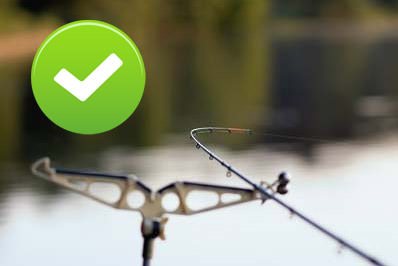
2 mistakes when looking for a place to fish with a feeder!
From the ice
Winter feeder installation – installation in harsh weather conditions. Ice fishing gear differs only in that it uses stronger and thicker fishing lines, as well as other structural components.
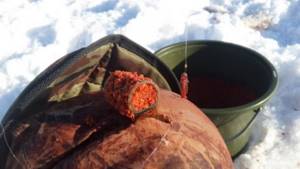
The winter feeder works as follows:
- A feeder is attached to the tackle
- The feeder is filled with complementary foods and goes down into the hole.
- Reaches the bottom, after which the leash is pulled tight
- When bitten they hook

If there are no bites within 10 minutes, refill the feeder

Experienced winter feeders recommend starting fishing with thorough feeding. In winter, the fish is hungry, so it will come to the right place faster if you provide it with plenty of food.
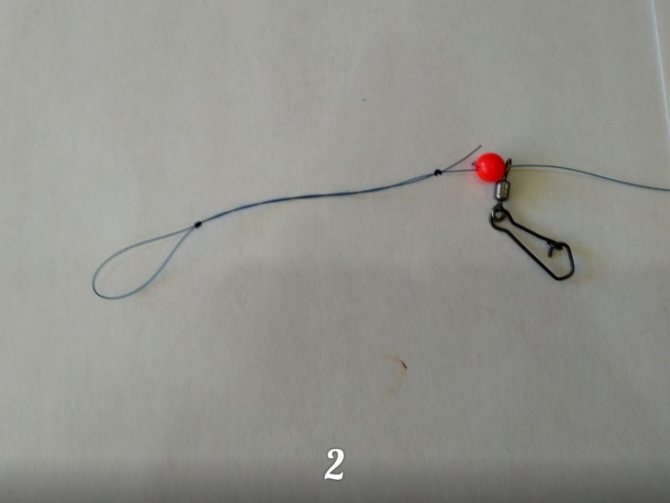
Feeder installation photo
Read here Fishing for carp on a feeder: the subtleties of fishing and advice from professionals on how to catch carp using different methods (110 photos)
Help the project, share on social networks 

0
